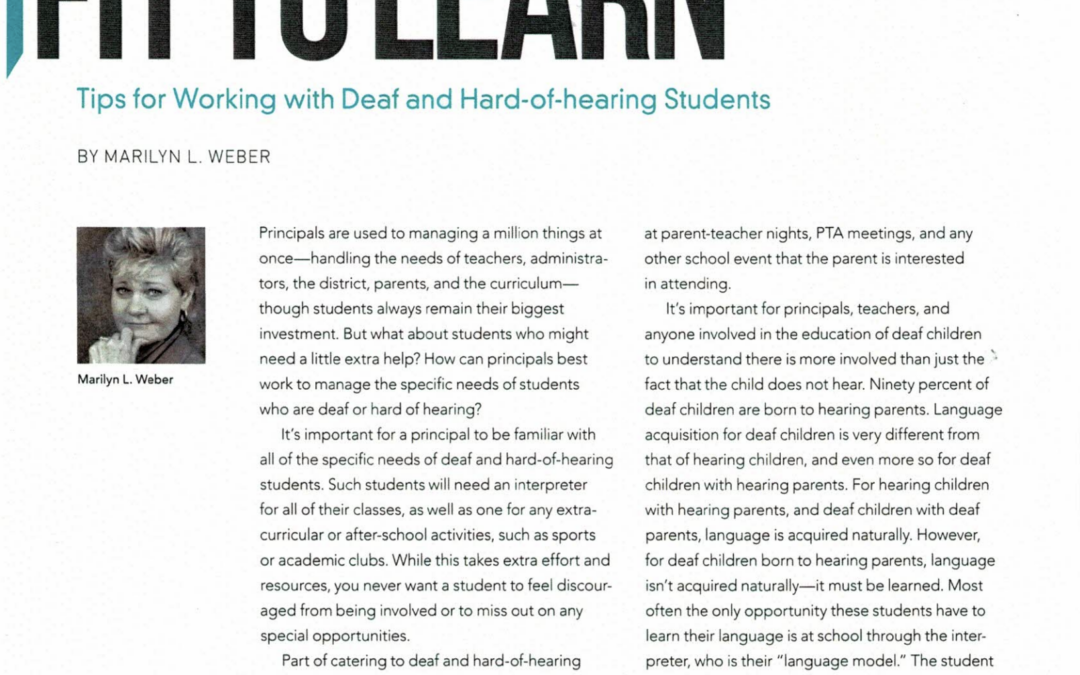The Gallaudet Bison football team is highlighted in a lengthy profile this month in The Atlantic, the prominent literary magazine founded in 1857. The piece covers a lot of territory – it discusses deaf history, trends in Deaf Culture, disability law, medical technology, the challenges of identity politics, and lots more – but essentially conveys this message: The Gallaudet football team, much like the university itself, is successfully moving into the future by welcoming a newly diverse group of students and football recruits made up not only of whites, blacks, and Latinos, but also of deaf, hard-of-hearing, and fully hearing students.
The piece is authored by Matthew Davis, who is working on an entire book on the Gallaudet football program and deaf identity. It describes tensions and differences, but also growth, celebration and a promising future.
The Evolving History of a Deaf Institution
Last year, Gallaudet enrolled 1,121 students. Its student body, for the first time, included 200 hearing students. It hasn’t always been that way.
Initially founded in 1857 as a school for deaf and blind children, the school had its collegiate charter signed by Abraham Lincoln in 1864. For most of the next 150 years, Gallaudet remained small. It had just 254 students in 1955, for instance. But in the subsequent 40 years, the student body grew dramatically. That happened partly because of a Rubella epidemic in the ‘60s that left a tremendous number of children deaf, and partly because of federal legislation making education much more accessible to the Deaf in the ‘70s. Enrollment peaked in 1991, with 1,900 students.
But two important things happened around that time. In 1988, the Deaf President Now (DPN) movement successfully sought the appointment of a deaf president at Gallaudet, and began to build the core of a deaf identity movement. DPN was a catalyst for the Americans with Disabilities Act (ADA) of 1990, which helped bring many more deaf people into the mainstream of national life.
Ironically, at this triumphant moment of deaf rights and deaf power, the seeds of Gallaudet’s current struggles were sown. By broadening educational access and opportunities for deaf children, the ADA lessened the importance of all-deaf secondary schools and Gallaudet. Since 1991, enrollment at Gallaudet has fallen by almost 60 percent.
Football Grows in Prominence
The football team at Gallaudet, meanwhile, was going through its own evolution. The school has always had a football program – in fact the football huddle was invented in the 19th century by Gallaudet players concerned that opposing teams were stealing their plays by reading their ASL signals — but it has always been a smaller, low-profile club team. In 2009, that changed. Gallaudet was named a founding member of Eastern Collegiate Football Conference (ECFC). Relatively speaking, this was the big leagues. In 2013, the Bison won their conference championship and made the Division III playoffs for the first time in college history. There was no turning back.

In 2009, the Gallaudet Bisons became a founding member of the Eastern Collegiate Football Conference (ECFC), and began more aggressively recruiting not just deaf players, but hard-of-hearing and fully hearing prospects too.
Until about 2010, almost all Gallaudet students came from state deaf schools, filled with children fully deaf from birth and raised knowing ASL as their first language. In the last decade, that’s changed. Coaches aggressively recruit not just from deaf high schools, but among the hard-of-hearing at mainstream high schools, and even among the fully hearing.
A separatist deaf culture prevailed for several generations, but today faces reconsideration and reinvention as a result of its own success. ADA led to a growing celebration and integration of deaf people into the mainstream. ‘There’s now a Deaf Hollywood, Deaf Capitol Hill, and Deaf Wall Street,’ Davis writes. ‘How do they retain their deaf cultural identity while also broadening its tent for the sake of its own survival? What does it mean to be deaf?’
“One answer,” Davis posits, “can be found on the football field, where the mixture of the culturally hearing, mainstreamed athletes and culturally deaf, deaf-school athletes creates a mosaic that would not have existed 10 years ago but that is perhaps the model for the university’s—and the community’s—composition 10 years from now.”



